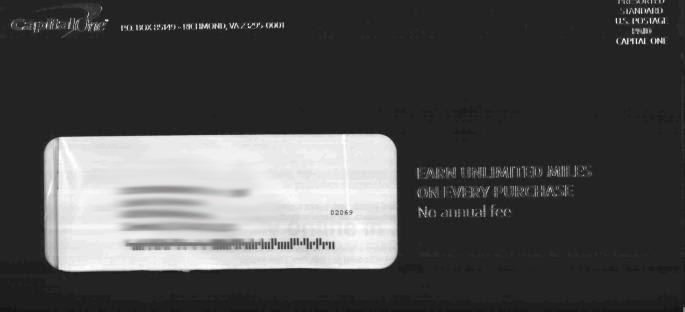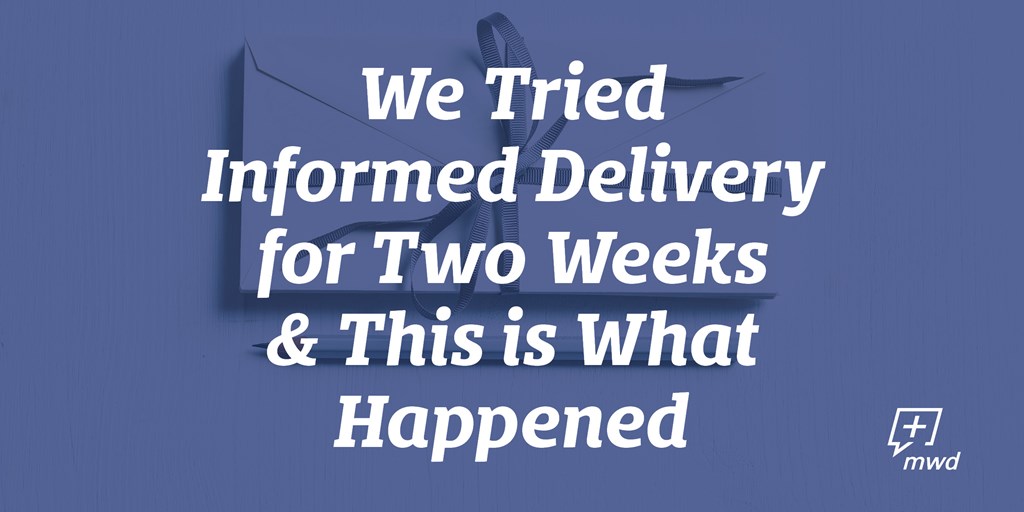A few this have changed in the world of Informed Delivery since this blog was posted, please read our new blog, give us a call, or refer to the USPS website for the most up to date information.
DISCLAIMER: Informed Delivery is a service through the USPS. Please refer to their website if you have questions or are experiencing technical issues.
If you ask anyone in the print or mailing industry what the most talked-about topic is at the moment, you will definitely hear about USPS Informed Delivery™. Now that the service has been expanded nationwide, it will likely continue to gain traction by businesses and individuals alike.
To sum it up quickly, Informed Delivery is a new customer-facing service from the USPS that provides a digital daily digest of mail prior to its arrival at the mailbox. Customers are able to see greyscale images of up to ten mail pieces per day, for free. The service is provided at the household level, with the option for multiple residents to enroll. The reviews from early adopters have been positive, with a 91% satisfaction rating and 96% of participants checking their email daily for mail notifications.
As with most things in life, you never really know what something is like until you try it. We decided to test out Informed Delivery firsthand – here’s what we found:
Pros
Individuals signing up for Informed Delivery are doing so for a reason, and it’s most likely because they experience periods of time in which they cannot immediately access their mail. With that being said, we loved how the daily emails were sent no later than 7:45 AM each day. This gave us ample time to review and respond to any urgent incoming mail.
The images were easy to read and clearly showed recipient information, which is important for households with multiple residents. The option to zoom in on the images allowed us to see the mail pieces even clearer. In the online portal, you could even mark that you didn’t receive a letter in the mail that you got a preview for.
One of the reasons why Informed Delivery is giving hope to direct mail marketers is because it truly does force someone to pay more attention to their mail, earning at least one more impression than normal. With more than 70% of subscribers opening their email every day, the chances of paying attention to a mail piece that they would otherwise throw away has gone up. Add timeliness into the mix, and businesses have a real opportunity to target customers at the beginning of their day, and perhaps at times where they are more likely to make purchasing decisions.
Ridealong campaigns allow businesses to enhance their direct mail pieces by including a colorful, interactive banner image along with a greyscale preview of the mail. This in itself could revolutionize direct mail, especially considering it will provide new metrics, such as clickthrough and open rates, that were previously unobtainable. Due to Informed Delivery still being in its infancy, we unfortunately did not come across any mail previews that included interactive content.
Lastly, although campaigns still need to be submitted manually at the moment, future updates promise full automation and self-service features, along with a user portal and the ability to apply campaigns at a multipiece level.
Cons
One of the mail pieces we received was for Capital One, with the entire envelope being the signature dark blue color of the company’s logo, as well as foil stamping. Unfortunately, it was extremely hard to read the mail preview, most likely due to the way the foiled text was scanned. For companies that do enjoy using more creative design elements on their envelopes, this may be reason enough to invest in either a ridealong or representative campaign, in which a separate image provided by the company is also included.

Another downfall to Informed Delivery is its current ineligibility for P.O. Boxes. This limits individuals who travel frequently, which is unfortunate since actually going and checking a P.O. Box is usually inconvenient. There is hope, however, that this will change in the future.
While Informed Delivery does scan postcards, we experienced some frustration in only being able to see one side of them in our previews. Images are only scanned on the barcode side, which means the marketing elements on the other side of postcards and letters are completely lost. This is something businesses will want to make note of, especially when planning design elements of the mail piece.
Finally, we did receive a few previews for letters that were addressed to former residents of the address. It would be nice to have a “Not My Mail” option for these kinds of letters, which could somehow be used as part of a change of address update with USPS.
Overall, Informed Delivery has been an incredibly effective and useful tool so far, and it is destined to positively impact the way that individuals view and respond to direct mail. It’s convenient, easy to use for both advertisers and recipients, and the perfect tool for a world on the go.
